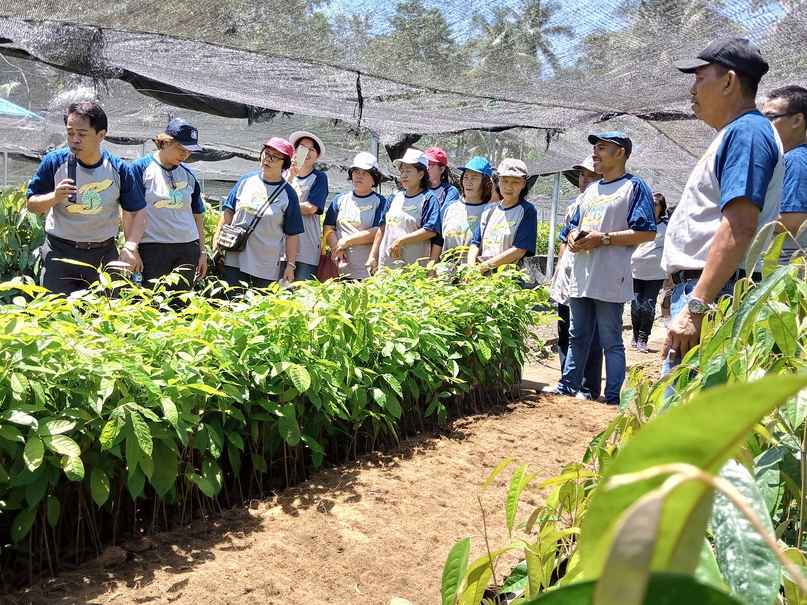Singing from the treetops on World Environment Day—local people can create renewable resources
5 June 2022

Farmers in North Sulawesi, Indonesia, receive training on nursery management as part of efforts under an ITTO project to revitalize cempaka-growing in the province. Photo: Muh. Farid/MEFRDI
Yokohama, Japan, 5 June 2022: An ITTO project in Sulawesi, Indonesia, has increased awareness among farmers of the benefits of a sustainable wood supply using planted native trees. It’s a functioning example of ITTO’s approach to tropical forest conservation and sustainable use aimed at producing positive outcomes for people and the environment, presented here to celebrate World Environment Day.
Cempaka (Elmerillia spp.), which is native to North Sulawesi province, Indonesia, has been used widely since the eighteenth century in the construction of traditional wooden houses and the manufacture of the kolintang, a traditional musical instrument. The wood has a distinctive fragrance and beauty and strong links to the history and culture of the Minahasa ethnic group. But its popularity has led to overharvesting and scarcity, and its supply has dwindled.
The ITTO project, described in an article published recently in the Tropical Forest Update by project trainer Diah Arini, set out to increase the sustainable supply of plantation-grown cempaka in three regencies in North Sulawesi.
Implemented by the Manado Environmental and Forestry Research and Development Institute, the project documented silvicultural techniques for the species; increased community knowledge in cempaka cultivation; developed 18 hectares of demonstration plots of cempaka across the three regencies; surveyed community and government interest in supporting the cempaka conservation programme; conducted training; and helped develop an integrated management plan for the resource.
The work is far from done, but good progress has been made under the small project and the results are promising. The project identified cempaka mother trees in two provinces capable of producing viable seeds and recommended methods for collection, storage and germination. These methods are now readily available to and understood by farmers, distributors and other members of the community. Dialogues were conducted in 21 villages to inform local people about the economic and ecological benefits of planting cempaka trees.
“Local people now have much more awareness of the potential benefits of cempaka plantations and the conservation of existing cempaka resources,” said Ms Arini in the article.
“It’s wonderful to see how local people are re-embracing trees on their lands,” said ITTO Executive Director Sheam Satkuru.
It is well known that tropical forests are important for carbon sequestration, storage, product substitution, biodiversity conservation and many other products and services, she said.
“Equally important is the well-being of people living in or near these forests. The project has demonstrated to farmers that growing trees on their land can provide them with direct benefits, while also supporting local industries and improving the environment. This is a message we should be singing from the treetops.”
The project also initiated work to improve the policy environment for cempaka conservation and sustainable use and to implement the integrated management plan. Both the central and regional governments will need to accommodate the plan in policies to ensure the sustainable use of cempaka.



